Eco Travel Guide: Tulum, Where To Stay & What To Do
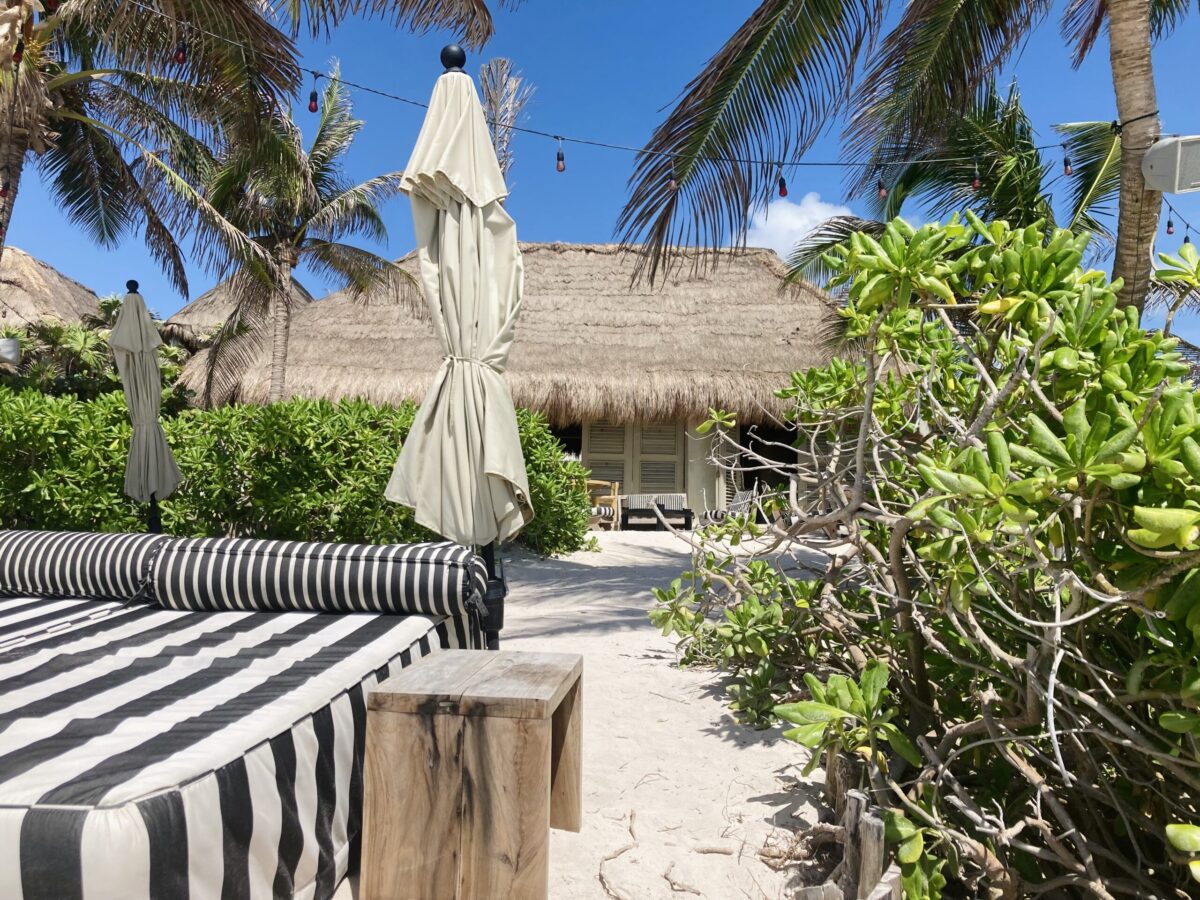
Share This Article
Azul water, white sand, Mayan ceremonies, and stunning hotels- Tulum is a wellspring of beauty. Yet, what’s not so beautiful is the greenwashing and plastic waste. So, here is an eco-lover’s guide to Tulum to enjoy the beach town while minimizing our impact.
| All products featured on The Wellness Feed are independently selected by our editors. However, when you buy something through our retail links, we may earn an affiliate commission.|
There is something special about Tulum that has been drawing people to the small coastal town nestled along Mexico’s Yucatán Peninsula for decades. It’s pristine white sand beaches, the world’s 2nd longest barrier reef, miles of lush jungle, ancient Mayan traditions, and a cuisine bursting with flavor are some of the reasons travelers and expats have named it one of their favorite backpacking getaways. Yet, it’s been over the last decade that boutique hotels, spas, and an airport of its own (that debuted this year) have blossomed the boho beach town into an ‘it’ travel destination.
With an increased interest in tourism, comes developers. Since 2010, Tulum’s population has surged by 65%. Pull an expat or local aside and ask them for their opinion about this change you’ll hear differing opinions about the good and bad. But you’ll likely hear the same environmental concerns- an increase of plastic pollution and water pollution. The expedited rate of throwing up infrastructure has resulted in an estimated 80% of hotels lacking the appropriate sewage systems that are polluting the very azul waters, white sands, cenotes, and barrier reef that draw 2 million tourists to the tropical destination yearly.
Dipping my toes into the jade-colored waters and powdery sand, I saw just how beautiful a destination Tulum is. But, when strolling through neighborhoods like La Veleta and the Hotel Zone, in between boutique hotels I saw lots of mini trash dumps. To do my part to protect the lush scenery of the jungle and pristine water I enjoy so much, I sought out hotels that reduce single-use plastic waste and restaurants that source locally, recycled glass water bottles, and ensured that I packed reef-safe sunscreen.
Traveling to Tulum? Read this eco-lover’s guide with tips about how to enjoy this budding boho town mindfully.
Getting Around Tulum: Walk, Bike, or Rent a Car
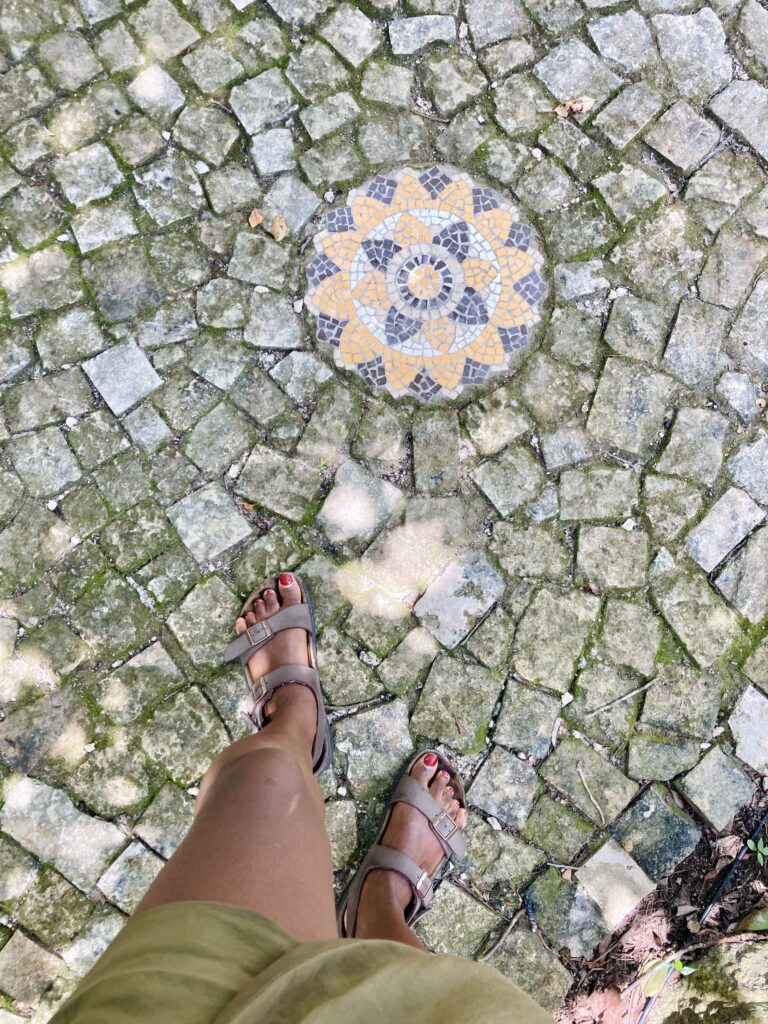
Plan your transportation ahead of time. Aldema Zama is an area known for its luxurious villas and resorts nestled deep into the jungle and require a car to get around the remote location. Neighborhoods like Tulum Centro, the Hotel Zone, and La Veleta are walkable for leaving your hotel to go to a restaurant or spa. However, if you want to see cenotes, and ruins, or explore another area from the one you’re staying in, you’ll need to rent a car or take a taxi, the latter of which can run $30+ per single trip (and you’ll have to negotiate the price with the driver). One thing to note is that as a town with budding infrastructure, electric vehicles and charging stations haven’t quite made their way to Tulum just yet.
For short distances, there are numerous places in each neighborhood to rent bikes for around $15 / day. So, you can walk into a shop or stand and pick up a bike in the morning for a day of leisurely roaming.
Resorts & Hotels: Where To Stay
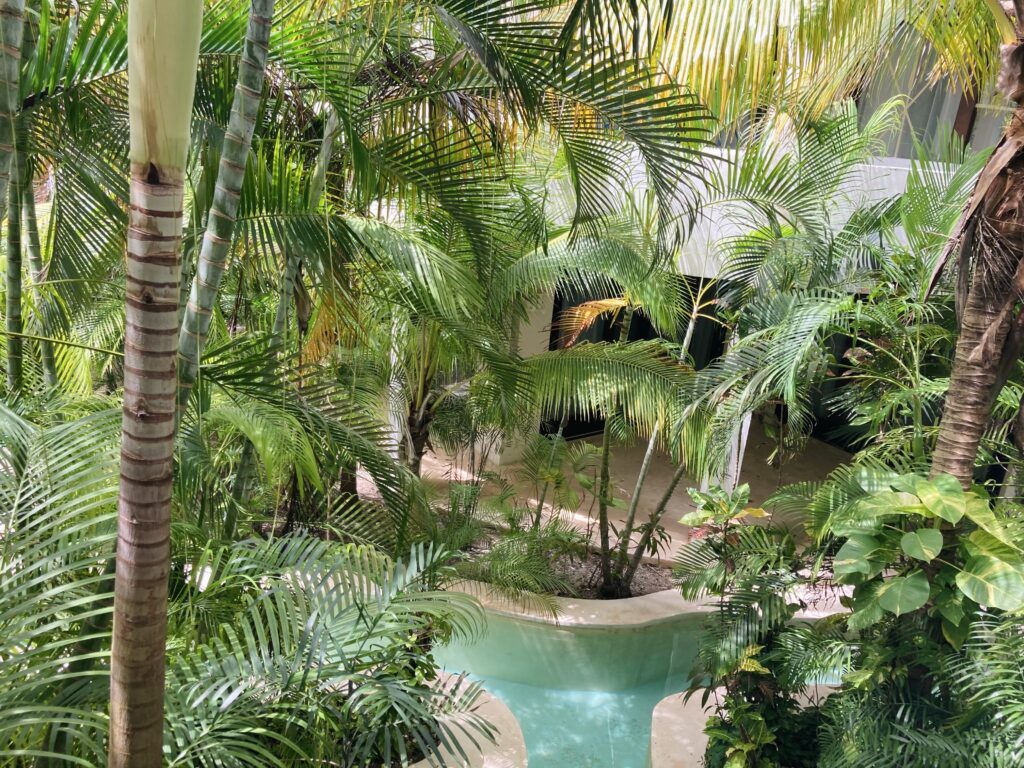
Woven into the lush jungle is a host of stunning architecture courtesy of the region’s best hotels and resorts. And, I do mean woven. One of the stunning visual aspects of Tulum is the way architects have chosen to blend nature into their designs. You’ll see resorts with trees growing in the middle of walkways, open designs for you to have a 360 degree of the jungle, and nature taking center stage all around. While all of this has the essence of eco-friendliness, most properties are still plagued by the same water and plastic pollution issues.
Beach Clubs: Hotels that are a hop & skip from the beach

AHAU HOTEL in beachfront hotel with a Green Key certification for its sustainable initiatives such as composting food waste and committing to refillable shampoos and conditioners.
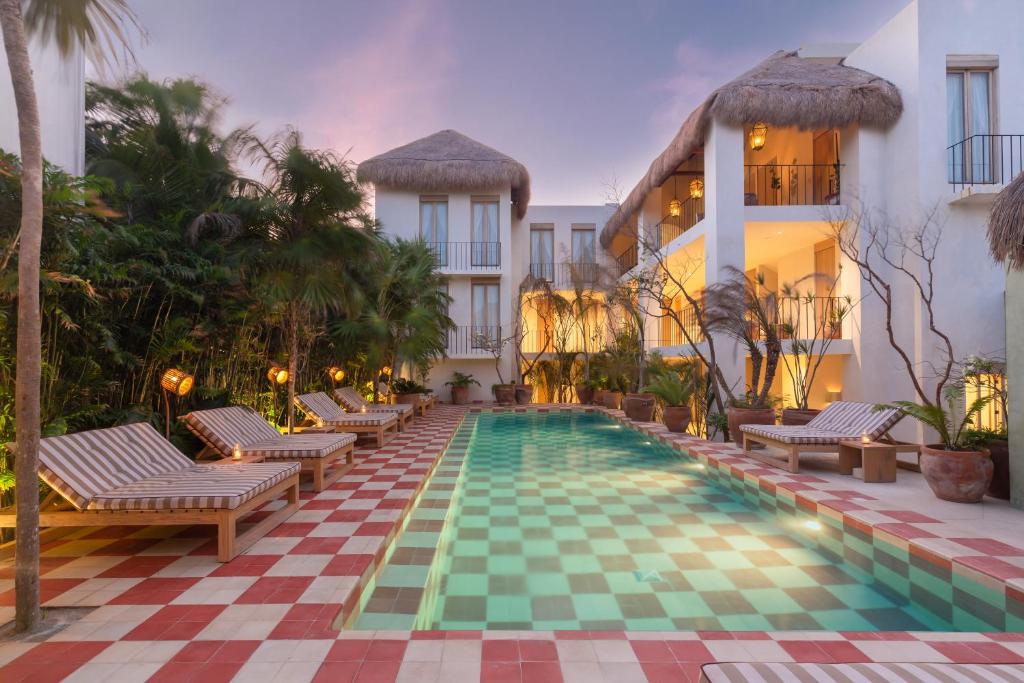
PANAMERA HOTEL is another hotel situated right on the beach. The food includes locally sourced produce, meat, and fish. And, all products from the cleaning products to the shampoos and conditioners are biodegradable.
Properties such as Panamera and Ahau attempt to limit single-use plastic with glass water bottles and no plastic straws in their restaurants and refillable soaps throughout. While I didn’t have a chance to visit Ahau, I did visit Panamera. The staff, I must say was helpful and all-around lovely to chat with and the guacamole was so fluffy and fragrant with pomegranate that I swear it was the best I’ve tasted in my life.
La Veleta: Expat Central
Speak to an expat and they’re likely to live in either Aldema Zama or La Veleta. The former is a jungle enclave and a short drive to the beach. The latter is an up-and-coming area (with A LOT of construction) that is a 20-minute drive to the beach but is ideal for walking around and enjoying various restaurants and nightlife.
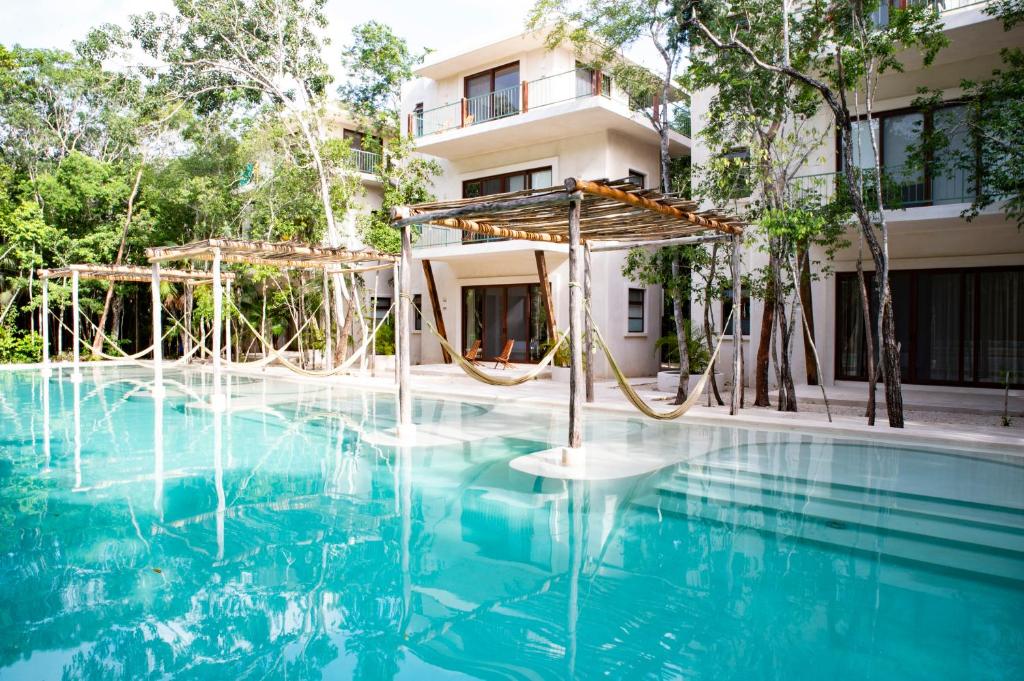
HOLISTIKA is a health resort centered around Mayan rituals for healing, daily yoga, and a juice bar featuring fresh fruit and vegetable juices.
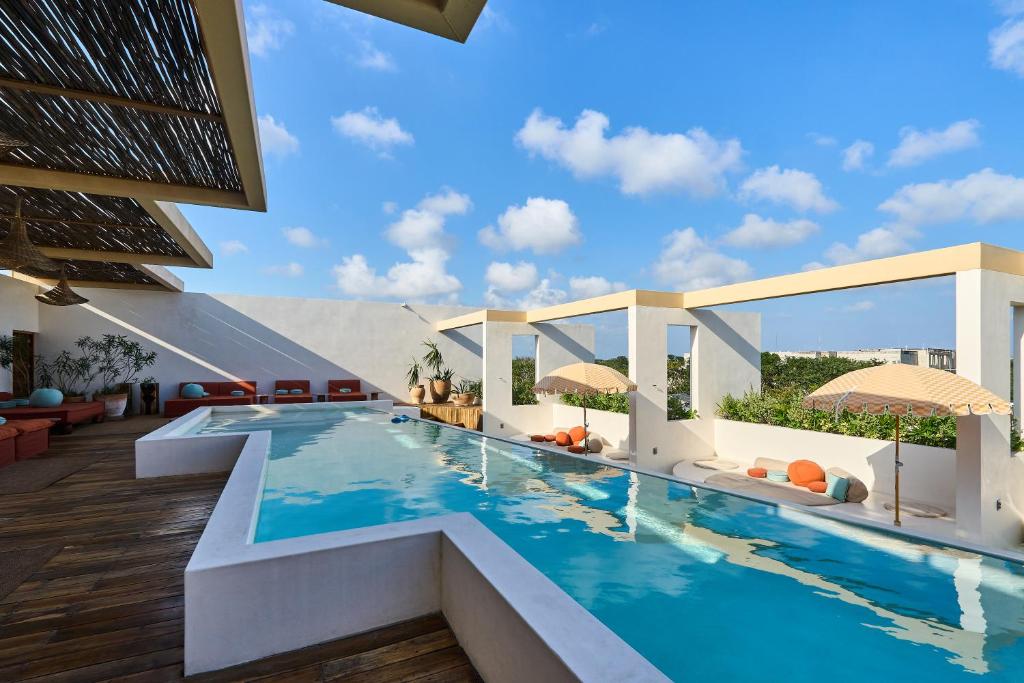
BACAB is the new kid on the block in La Veleta celebrating local art and community. Water-efficient toilets and showers, no single-use plastic, and organic and vegan meals are a few of the sustainable steps taken by this hotel.
I had the pleasure of enjoying said nightlife at Bacab for an art exhibit opening and an after-party. The new hotel has a calendar full of evening events celebrating local artists and is focused on forging a sense of community in Tulum. Holistika I indulged in green juices, ceremonies, and yoga- the daily events you’ll find at the resort nestled in the jungle.
The Tulum Experience: What To Do






Tulum still maintains its boho charm. With miles of white sand, leisurely dinners of freshly caught seafood, and magical swims in the underground cenotes of the Yucatan, there are plenty of blissful experiences to indulge in. Plus, you can dip your toes into the local art scene thanks to creative spaces and their communities.
Beaches
To the south, you’ll find miles of pristine sand and turquoise waters. This is also home to the Riviera Maya’s luxurious hotels and beach clubs. Unwind by renting a cabana for the day and enjoy a rotation of freshly squeezed fruit juices and flavorful food. The downside to the beached-out-luxury bliss is that there is very little public access to the beaches in South Playa.
Venture further north away from the bustling Hotel Zone and you’ll find Playas Ruinas. Shielded from overdevelopment, these gorgeous beaches have the backdrop of striking cliffs and the Mayan ruins. Public beaches are more accessible and those craving adventures can book a tour to go snorkeling.
Cenotes
A cenote is a freshwater sinkhole that happens when there is a collapse of limestone that exposes underground water. Holding these spaces as sacred, Mayans used cenotes as a water resource and occasionally as sites for ceremonies.
8 Plant-Based, Cruelty-Free, Eco-Friendly & Reef-Safe Sunscreens
Today, these spaces have become popular among tourists seeking a chance to swim in one of the region’s most striking settings. Two of the most popular ones are Casa Cenote, an open one that looks similar to a lake, and Cenote Jardin del Eden which offers options snorkeling opportunities. *If you’re not booking with a guide and driving to the cenotes, be sure to bring pesos for the entrance fees and life jacket rental (which is mandatory).
Ceremonies & Wellness
Get your blood flowing with sunrise yoga. Realign your emotions and energize your body with a Temazcal Ceremony. Indulge in the rich flavors of chocolate and open your heart in a Cacao Ceremony. Or simply unwind with a body-nurturing massage. Tulum has many healing and self-loving experiences to choose from.
Local Art
Art lovers can immerse themselves in the blossoming art scene in Tulum. There are established spaces like Aluxiik that offer art installations and classes like pottery and newer experiments like The Tulum Art Club at Bacab in La Veleta that focuses on nurturing rising talent and creating community. Travel to Tulum Centro to visit Radio Tulum, a hotspot for insightful discussions about the changes in Tulum from the viewpoint of its artists. Stop by for a live tapping of an interview or musical performance.
Tulum Cuisine: A Personal Gastronomy Guide






Not to take the fun out of exploring this lush coastal town for the best eats, I have a few recommendations to start off your culinary journey. These spots are chosen for delicious cuisine and their commitment to local produce, reducing food waste and single-use plastic.
Hartwood is THE gastronomy experience in Tulum. It’s a world-renowned restaurant revered for its rotating menu that changes with the seasons and is shared on the day of. Environmentalists will also love its solar panels. Visit their Instagram to reserve a table at this unassuming spot that sits right across the road from the beach in the Hotel Zone.
Delicia de mi Tierra Tulum is an unassuming traditional Mexican restaurant in La Valeta. But, the food is bursting with flavor. It offers a chic rustic decor, complete with trees growing inside the property through the second floor, and traditional artwork. And, it’s here I learned that a traditional taco is actually wrapped and closed.
Other honorable mentions include Ilios, a Greek restaurant, Italdo a French cafe, Funky Geisha, an Asian fusion hotspot by the beach, Holistika a vegan haven with hands-down the best fresh juices I’ve had in a while, and Burrito Amor, a chic spot to indulge in burritos in Tulum Centro.
For lunch and quick meals try a taco cart. Visit La Veleta or Tulum Centro and you’ll find dozens to choose from. These stalls come alive at night offering tacos for omnivores and vegans.
Eco Travel Tips
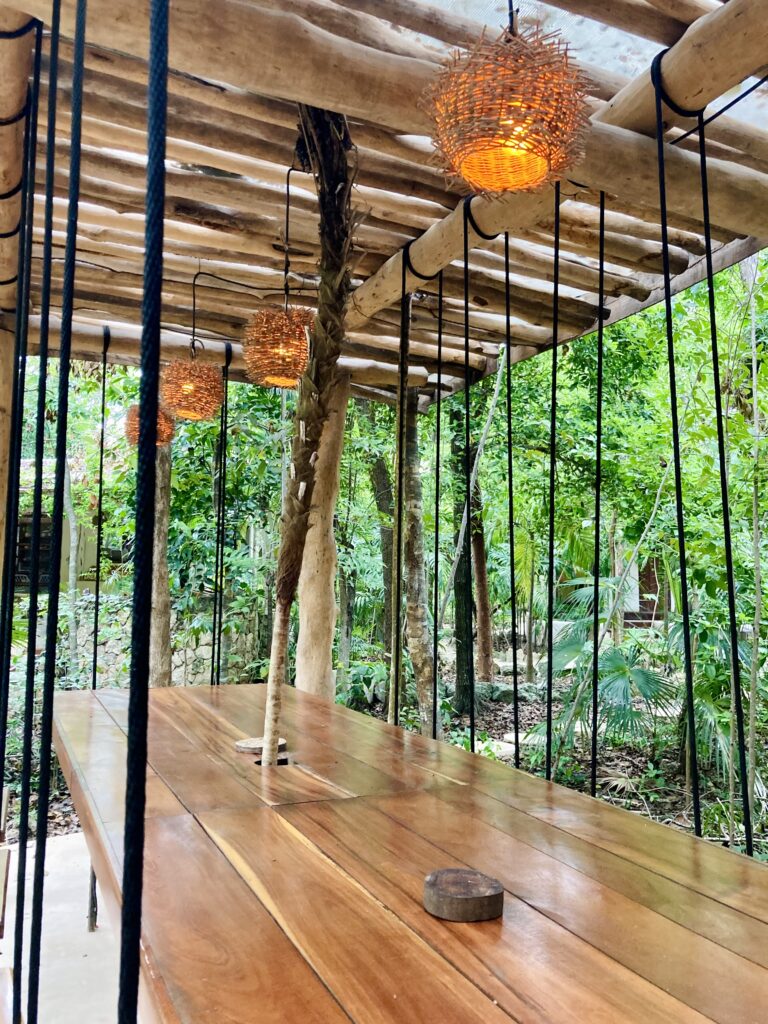
When traveling there are simple tips we can all adapt to our holiday to ensure we’re respecting and preserving nature, minimizing our waste, and supporting local businesses.
- Bring a reusable water bottle: It’s strongly suggested that you don’t drink tap water in Tulum. To avoid buying multiple single-use plastic water bottles, I purchased a 5-gallon water jug from XOXO (a local convenience store similar to 711) and refilled my water bottle throughout the day.
- Ask restaurants if they have glass water bottles: If you’re out at a restaurant, you’ll be asked if you’d like water. To avoid single-use plastic, I’d ask if they have water in a glass bottle (that I would recycle later).
- Wear reef-safe sunscreen: This is important when visiting beaches and cenotes. Some cenotes will specify that sunscreen is not allowed to avoid exposing the delicate biosphere to harmful chemicals.
- Bring what you need and recycle: I brought my own toiletries and chose a hotel that had refillable shampoos and conditioners. When I was out and about, I’d hold onto wrappers and packaging until I saw a recycling bin.
- Eat Local: Sometimes this tip is a little harder to follow. While hotspots like Hartwood specialize in showcasing local produce and meats, finding other restaurants that do the same, can be a challenge. Even so, there are many that highlight local produce on their menus and all the rich flavors Mexico has to offer.
